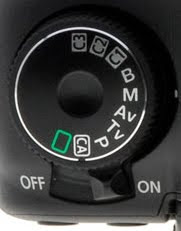Photography is all about light. It really doesn’t matter how expensive your camera body is, how nice your lenses are, or even how photogenic your subject is. Without good light, getting good photos is impossible. I’m not saying that you can’t take good photos without a flash, I am saying that having a flash in your kit will open up many more opportunities to take good photos.
The built-in flash on a DSLR camera provides some help when you’re desperate, but that hot-shoe on the top of your camera body is there for a reason. A built-in flash has the following limitations:
- Low power. The amount of light your built-in flash can produce is relatively small. It might be able to throw light 13 meters (42 feet) at best. A Canon 430Ex II can throw light up to 43 meters and the 580Ex II up to 58 meters (Hence the names 430 and 580).
- Fixed direction. Your built-in flash can only fire in one direction – straight forward. This might sound handy, but it has limitations. Without being able to bounce light of other surfaces, any shadows on your subject’s face will be filled in. This makes a face look ‘flat’ and reduces depth in the image.
- Lens shadow. If you have a long lens on your camera or even a short lens with a hood mounted, the flash may not be tall enough to fire over the top. This can result in a shadow at the bottom of the frame created by the lens blocking light from the flash.
- Red eye. The phenomenon of ‘red eye’ occurs when light enters an eye at a narrow angle in relation to the lens axis. Since a built-in flash fires almost directly in line with the lens direction, light entering an eye bounces straight back into the camera. A separate flash allows you to bounce light into the face from an off-axis angle which removes the red-eye issue.
Another advantage to using a flash is that you can use light modifiers on it such as diffusers, grids and snoots. Eventually, you will want to get your flash off your camera for even more creative opportunities. But I’ll leave that for a future post.
Let us know how your photography changed after getting a flash for the first time.
Canon 580Ex II flash units on a 40D (left) and 50D (right).






